The Negative form of the verbs "ÊTRE" & "Avoir"
- Books Name
- Education Vision French Book
- Publication
- PathSet Publications
- Course
- CBSE Class 6
- Subject
- French
Introduction of Negative form of verbs
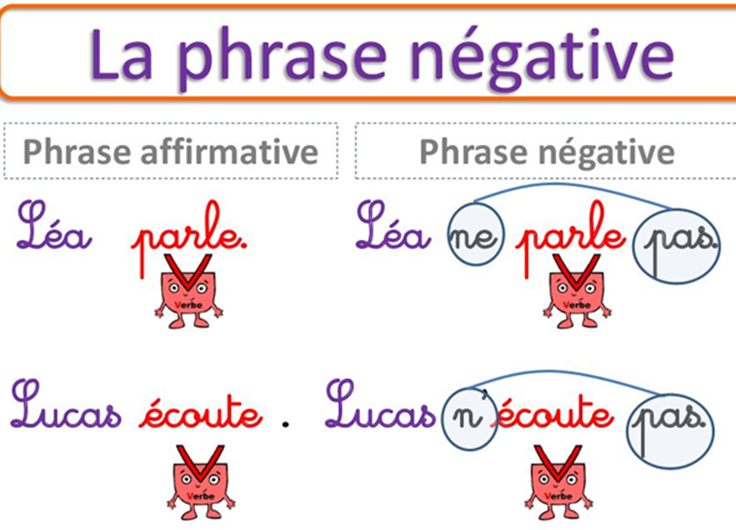
Sentence formation from Masculin to Feminine
- Books Name
- Education Vision French Book
- Publication
- PathSet Publications
- Course
- CBSE Class 6
- Subject
- French
Rules of Negation to conjugate the verb
Les phrases négatives
A negative sentence (une phrase négative) allows us to negate a statement, express disagreement, make contradictions or deny the occurrence of an event or action. The most common negative construction in French is ne + verb + pas, although there are also other phrases we can use.
A negative sentence is a sentence whose verb is negated with the word “not” and an affirmative sentence is… The contrary :-)
I can speak French – affirmative sentence
I can not speak French – negative sentence
In English, the negative form often take elision (meaning contracts) in writing: don’t, isn’t, aren’t, can’t…
In French, the regular way to make a sentence negative in writing is to use “ne + verb + pas”.
Je parle français => je ne parle pas français
How to make negative sentences in French
ne … pas
Most negative sentences in French are formed with the ne … pas construction. The conjugated verb comes between the two parts: ne + verb + pas
Before vowels (a, e, i, o, u) or a silent h, ne becomes n’. This is known as elision.
Par exemple…

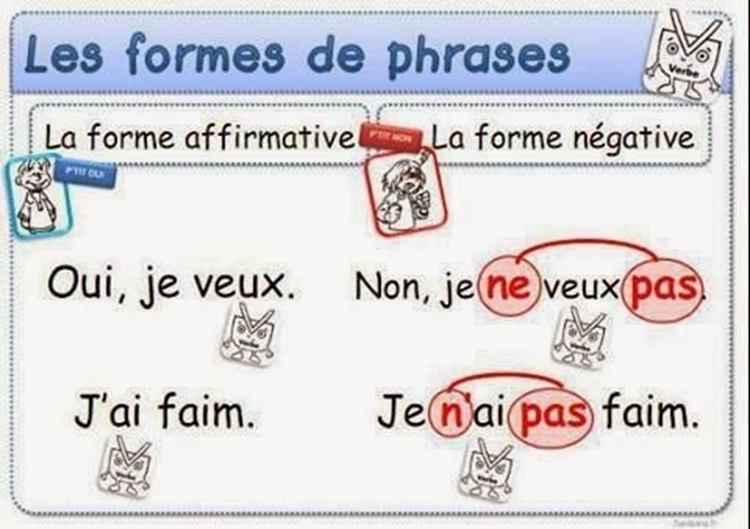
Introduction of Colours in French
- Books Name
- Education Vision French Book
- Publication
- PathSet Publications
- Course
- CBSE Class 6
- Subject
- French
Introduction of Colours in French
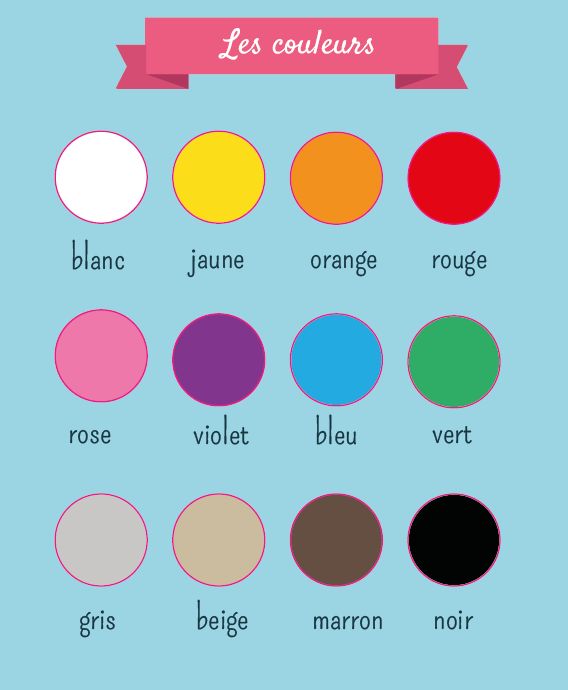
Gender categoristion of Colours (Masculin/Feminine)
- Books Name
- Education Vision French Book
- Publication
- PathSet Publications
- Course
- CBSE Class 6
- Subject
- French
Gender categoristion of Colours (Masculin/Feminine
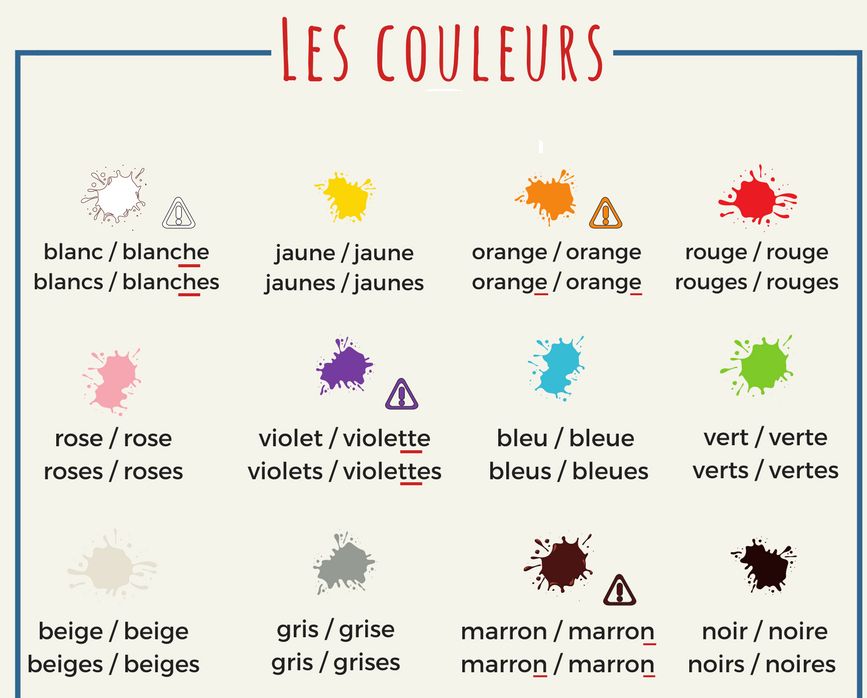
Placement of colours with noun
- Books Name
- Education Vision French Book
- Publication
- PathSet Publications
- Course
- CBSE Class 6
- Subject
- French
Placement of colours with noun
Some points we have to remember about colours are:
- In French, all colours come after the noun they are describing.
e.g. A red pen – un stylo rouge
- Like all other adjectives in French, colours agree with the nouns they are describing, in number and gender.
- Compound colours like “light blue” and “dark green” don’t agree with the noun they are describing.
e.g. A light blue dress – une robe bleu clair
- Colours like “orange” and “marron” which are derived from a fruit or nut are invariable, i.e. they do not change in te feminine or plural.
- Whenever we ask the question, “What colour is…..?” in French, we always have to start the question with “De quelle couleur est ……?”
For example:
De quelle couleur est la chaise ? (What colour is the chair ?)
La chaise est brune. (The chair is brown)
Introduction of L'Adjectif Qualificatif with gender categorisation
- Books Name
- Education Vision French Book
- Publication
- PathSet Publications
- Course
- CBSE Class 6
- Subject
- French
Introduction of L'Adjectif Qualificatif with gender categorization
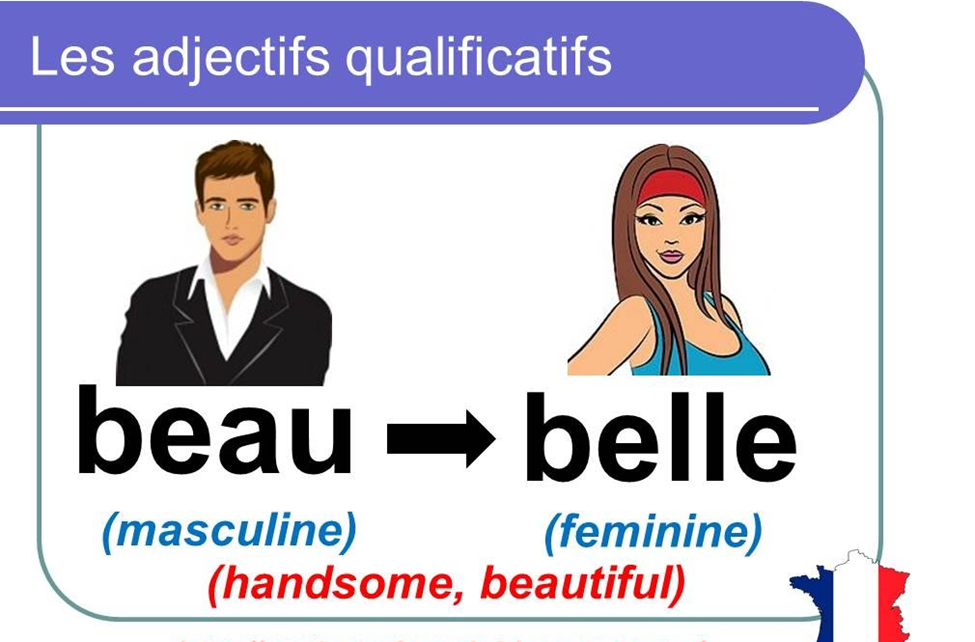
• Adjectives are words that are used to describe nouns. Examples: green, big, stupid
• In French, adjectives have two specific rules that are very different from English:
1) Adjectives must agree with the gender and the number of the noun they describe.
2) Adjectives are generally placed after the noun unless they describe BANGS.
Gender categoristion of Adjectives (Masculin/Feminine and Plural)
- Books Name
- Education Vision French Book
- Publication
- PathSet Publications
- Course
- CBSE Class 6
- Subject
- French
Gender categoristion of Adjectives (Masculin/Feminine and Plural)
Gender/Number
• All French adjectives have four forms: masculine, singular; feminine, singular; masculine, plural; and feminine plural. The following are the rules for creating each form:
o Masculine singular: generally, you will be given the masculine, singular form of an adjective in the dictionary, so you make no changes.
o Feminine singular: In order to make a masculine adjective feminine, you simply add an "e" at the end.
** if the adjective already has an unaccented "e" at the end, do not add anything.
o Masculine plural: generally, you will add an "s" to the end of your masculine, singular noun; there are some irregulars.
** if the adjective already ends in an s or x, do not add anything**
o Feminine plural: add an "s" to the feminine form.
** if the adjective already ends in an s or x, do not add anything***
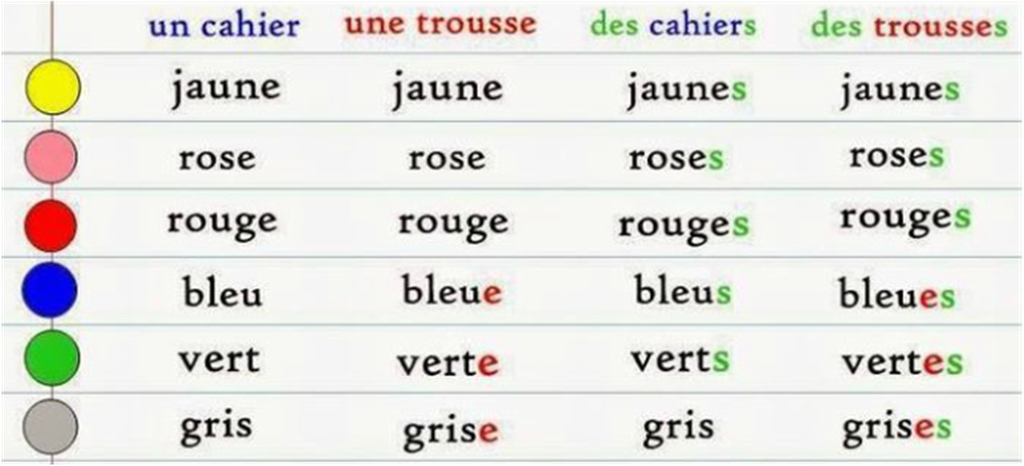
Rules to place the adjective before and after the nouns
- Books Name
- Education Vision French Book
- Publication
- PathSet Publications
- Course
- CBSE Class 6
- Subject
- French
Rules to place the adjective before and after the nouns
Placement
• The general rule for adjective placement in French is the opposite of English, meaning that adjectives will normally go after the noun.
Ex: a blue car = une voiture bleue
• There are some exceptions to this rule and they can be remembered by the acronym BANGS
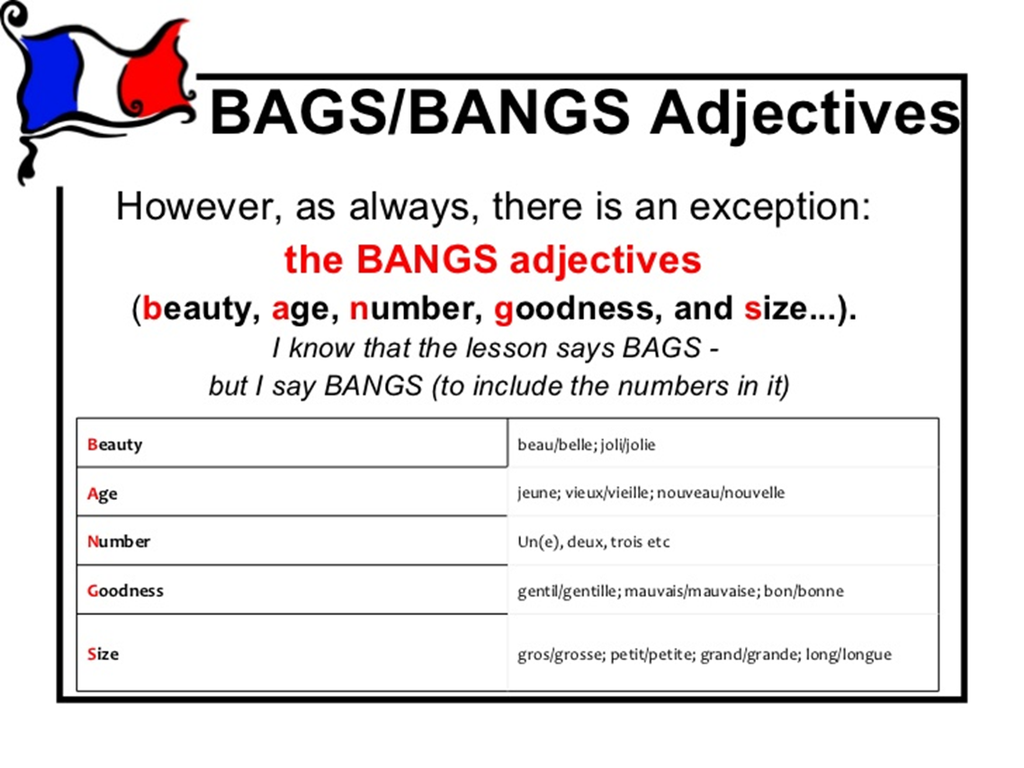
• Number can also include the adjectives first (premier/première), second (deuxième), etc.
Ex: Il est le premier magasin au droit.
It is the first store on the right.
• It is important to place the adjective correctly because there are some adjectives whose meanings will change from a literal to a figurative sense depending on their placement.
Sentence formation with adjectives
- Books Name
- Education Vision French Book
- Publication
- PathSet Publications
- Course
- CBSE Class 6
- Subject
- French
Sentence formation with adjectives
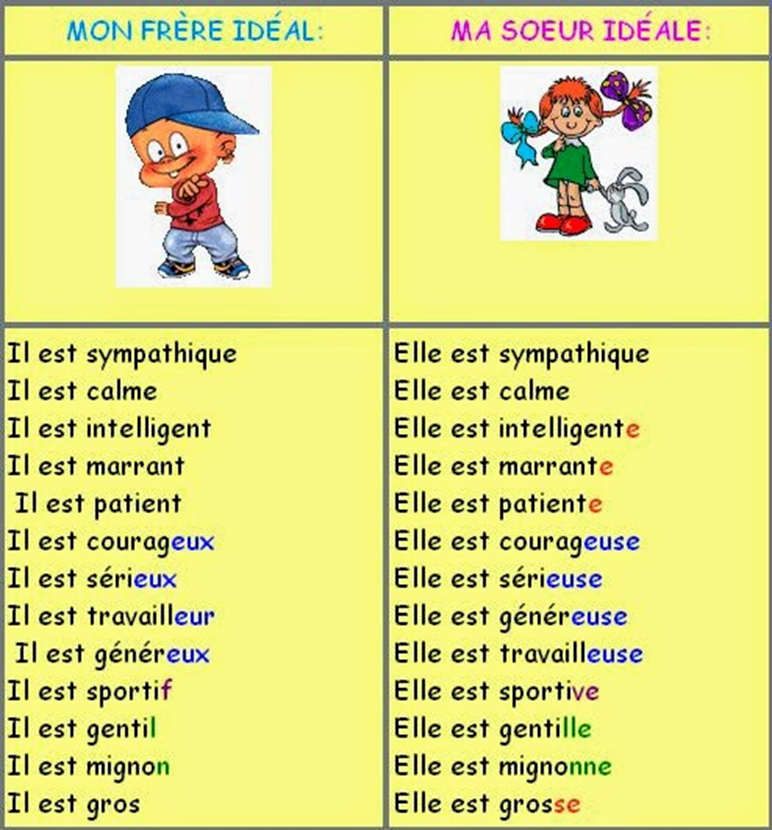

 PathSet Publications
PathSet Publications
